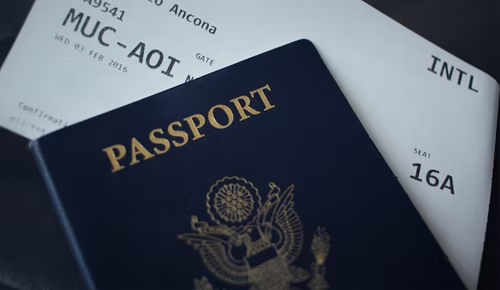Blog

American airport security as we know it today was not always so strict. Current security measures in airports took years to evolve. Historically, the Transportation Security Administration (TSA) added new requirements following an attack or threat, not preemptively. The TSA itself was only created because of the attacks on 9/11.
TSA security measures are designed to make air travel safe for all, but that does not mean they aren’t controversial. Critics claim that TSA security measures are all bark, no bite – all show, but when push comes to shove, they won’t prevent a terrorist attack.
At the same time, a recent poll by YouGov shows that 79% of Americans think the TSA should prioritize security over convenience. In other words, most Americans recognize the need for TSA restrictions, even if they aren’t perfect.
How 9/11 Changed Air Travel
People born after 9/11 never knew how easy flying could be – show up shortly before your flight, leave your coat and shoes on as you walk through the metal detector, bring liquids onto the plane. The Federal Aviation Administration even allowed knives up to four inches on flights, if you can believe that.
The naivete of airport security at the time is what made the 9/11 attacks possible. Once the planes hit the World Trade Center and Pentagon, everything changed.
The Establishment of the TSA
Two months after 9/11, Congress passed the Aviation and Transportation Security Act, which established the TSA. Its first order of business was requiring all checked baggage to be X-rayed, add more air marshals, and reinforced cockpit doors.
The Evolution of TSA Security Protocols
Shoe removal became an issue a few months after 9/11 when a terrorist tried to detonate a bomb hidden inside his shoe. At first, the TSA asked passengers to remove their shoes voluntarily. In 2006, voluntary turned to mandatory.
That year also saw the TSA ban liquids, gels, and aerosols after a terrorist tried to detonate liquid explosives on planes in London. The ban was amended a month later to allow fluids less than 3.4 ounces.
Full body scanners were implemented after a terrorist tried to set off explosives hidden in his underwear on a flight from Amsterdam to Detroit in December 2009. Scanners were installed in airports across the United States a few months later.
In 2011, the TSA launched its PreCheck initiative, which expedites check-in for vetted passengers. To qualify for PreCheck, travelers pay $85 for a five-year membership, which includes detailed background checks. It’s a win-win for passengers who do not want to wait in long lines and for security officials who can focus efforts on real threats.
In 2017, the TSA began using facial recognition software as part of their security tactics. While this raised concerns about government tracking and privacy, the TSA has continued moving forward, citing the accuracy and ease of this technology.
In May 2022, in an emerging post-COVID world, the TSA upgraded airport security by deploying Credential Authentication Technology (CAT) and Computed Tomography (CT) scanners. The former is a technology that can read and verify digital identification; the latter can review 3D images of passengers’ bags. Together, they work to improve identification verification while minimizing physical contact with passengers.
Do TSA Security Requirements Keep Passengers Safe?
The TSA was created because of 9/11 and most of its security measures have been implemented following real-world threats. While the TSA has historically been playing catch-up on air travel security, its current stance on using the latest technology shows an initiative not shown in the past.
As the TSA becomes more proactive in screening for security threats, it’s also trying to make the passenger experience more convenient with cutting-edge technology – but security will always be the number one priority, as it should be. Ultimately, airport screening measures primarily demonstrate their value through the deterrence factor they create.

